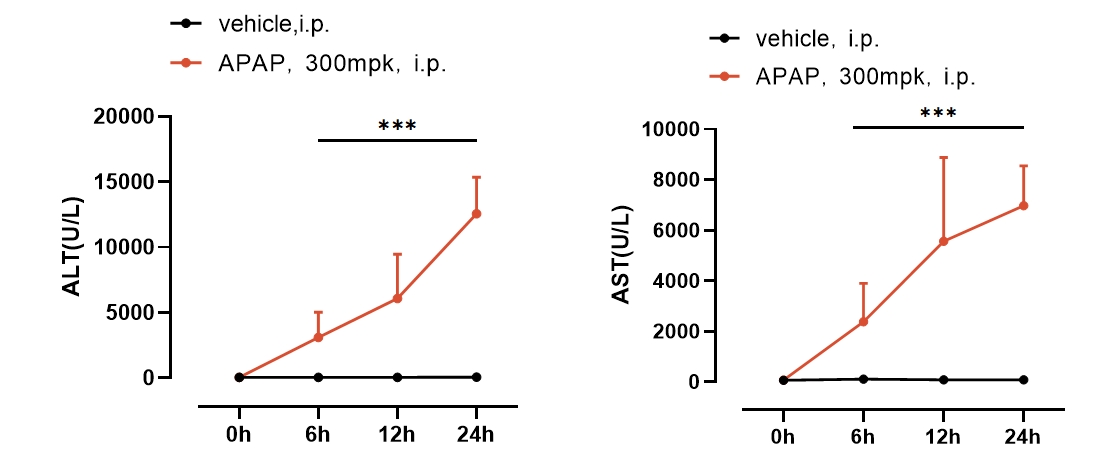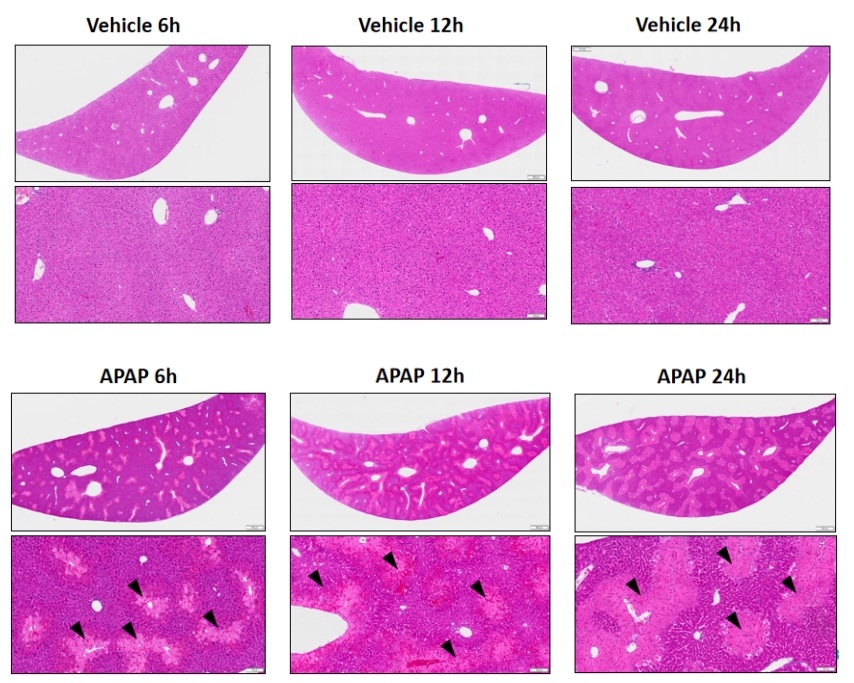The APAP (Acetaminophen, Paracetamol)-induced acute liver injury mouse model is an experimental model widely used to study drug-induced liver injury and liver protection mechanisms. Overdose of APAP leads to the depletion of glutathione (GSH) and the accumulation of N-acetyl-p-benzoquinone imine (NAPQI), which then binds to proteins, lipids, and DNA in hepatocytes, resulting in severe liver injury. Additionally, the accumulation of NAPQI causes mitochondrial dysfunction, generating a large amount of reactive oxygen species (ROS), which further damages mitochondria and other organelles, leading to hepatocyte necrosis. This subsequently activates Kupffer cells and neutrophils, triggering an inflammatory response. These hepatotoxic effects can be recapitulated in mice creating a model valuable for studying the pathophysiology of AIH and testing potential therapeutic interventions.
Experimental Design and Example Data

APAP-induced acute liver injury mice

Figure 1. Mice show significantly increased liver function indicators (ALT, AST) after APAP induction of liver injury.

Figure 2. TNF and MCP-1 increase, but IL-6 decreases after APAP administration.

Figure 3. H&E staining reveals liver damage after APAP administration with the severity of the injury increasing over time.

